The 10 Biggest Upsets in Kentucky Derby History
Did you bet on the 2022 Kentucky Derby? If so, we sure hope you happened to put your money on Rich Strike and struck rich yourself. Though you probably didn’t, because Rich Strike was hardly even considered a contender.
But with Rich Strike’s story making headlines, we bet you are curious about the biggest upsets in the history of the Kentucky Derby!
In this post, we will share some of those stories with you. In the future, we will devote other posts to shocking upsets in other horse races.
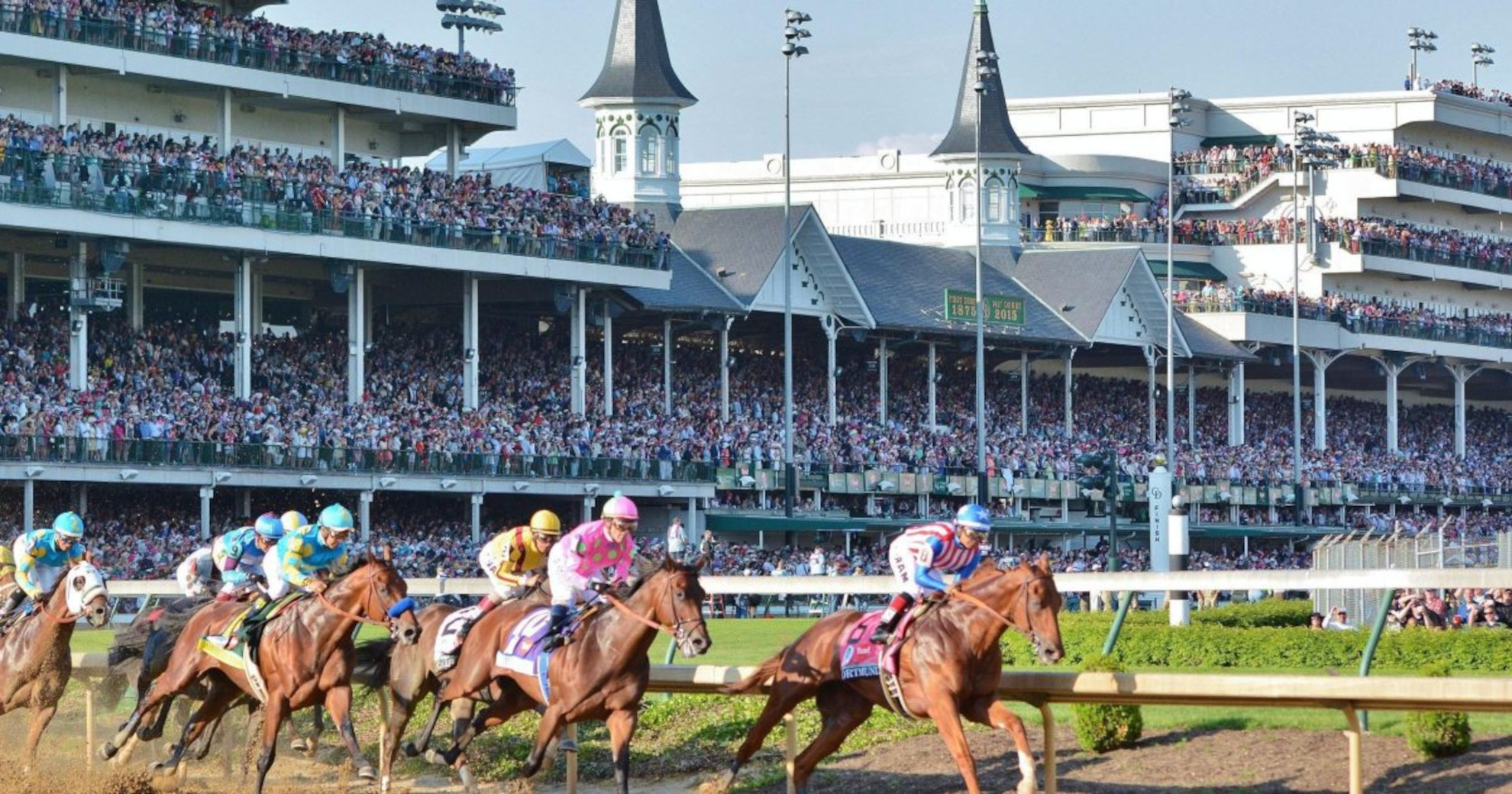
The Kentucky Derby taken from GoToLouisville.com
Biggest Upsets in the History of the Kentucky Derby
2022: Rich Strike
We will start by telling you about Rich Strike since he just won the Derby! In case you missed the action at the 2022 Kentucky Derby, this horse was going off at 80-to-1 odds. In fact, it was only after Ethereal Road was scratched that Rich Strike had the chance to participate.
With the 80-to-1 odds, a $2 bet was sufficient to win $163.30. That means if you had wagered $200, you would have won $16,330! Had you wagered $2,000, you would have won $163,300.
Jockey Sonny Leon stated, “You know we had a difficult post but I know the horse. I didn’t know if he could win but I had a good feeling with him. I had to wait until the stretch and that’s what I did. I waited and then the rail opened up. I wasn’t nervous, I was excited. Nobody knows my horse like I know my horse.”
Leading up to the Kentucky Derby, Rich Strike had not been particularly impressive. According to USA Today, “He broke his maiden in September at Churchill and then raced five times without ever finishing in the top two. He finished 5¾ lengths behind Tiz the Bomb in the Jeff Ruby Steaks, earning the 20 points he needed to qualify for the Kentucky Derby.”
Rich Strike’s unexpected victory is a reminder that in the Kentucky Derby, anything can happen!
1913: Donerail
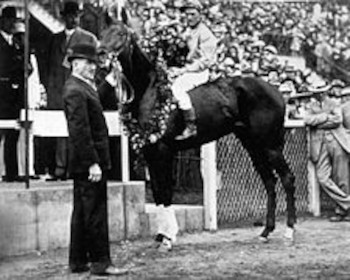
A pic of Donerail from Wikipedia.
Rich Strike’s victory was the second-biggest upset in the history of the Kentucky Derby. So, what was the first? It was the victorious run of Donerail in 1913.
While Rich Strike’s odds were 80-1, Donerail’s odds were 91-1! With those odds, a wager of $2 paid out $184.90.
Owner and trainer Thomas P. Hayes, who had also bred the horse, was not particularly confident. Indeed, the only reason Donerail ran at all was because jockey Roscoe Goose talked Hayes into it.
Also of interest is the fact that Donerail could not find room at the stables at Churchill Downs, and had to stay three miles away at Douglass Park. That also meant that before even running in the race, the horse had to walk to Churchill Downs. This initial fatigue seemed like a disadvantage that would only hold Donerail back.
Nevertheless, despite doubts and obstacles, Donerail was able to win by half a length, with Ten Point coming in second place.
You might think this was the start of something big, considering Donerail holds the record to this day for the biggest Kentucky Derby upset. But this horse had quite a modest career following the Derby.
2019: Country House
The horse with the third-largest upset in the history of the Kentucky Derby is named Country House. This upset occurred just recently in 2019. The odds were 65-1.
Country House at first appeared to come in second place. The horse that seemed to be the winner was Maximum Security—but following interference, Maximum Security was disqualified. That left Country House the victor by default.
Alas, this is another story where winning the Derby unexpectedly did not ignite a glorious career. And this story is a bit sadder.
Sports Illustrated reports, “After 125 seconds of racing last May 4, then a 22-minute delay for a steward’s ruling that elevated the runner-up colt to first and disqualified Maximum Security, a garland of roses was laid across Country House’s shoulders. Then the winner of the 2019 Kentucky Derby all but disappeared. He’d come up out of nowhere to win the Derby, then promptly returned there. Country House never ran another step.”
Following the Derby victory, Country House was headed for the Preakness or the Belmont Stakes to continue the Triple Crown—depending on whom one asks. Either way, Country House never would make it to either, owing to a fever that set in immediately following the Kentucky Derby victory.
The horse recovered from the viral infection. But he then experienced swelling and bone bruising in his leg followed by a hoof condition called Laminitis. Indeed, that is the condition from which Secretariat died.
Thankfully, this tale has a bittersweet ending. Country House’s racing days are over—but he did survive. Sports Illustrated says, “Today, the 4-year-old is frolicking, in good health, around the fields at Blackwood Stables. Eventually, he will begin stallion duties.”
2005: Giacomo
Next up, we have Giacomo, one of two horses that are tied for holding the record for the fourth biggest upset in Kentucky Derby history. The odds for Giacomo were 50-1.
To music fans, Giacomo’s breeder Jerry Moss is famous; together with Herb Alpert, he founded A&M Records.
There is another Kentucky Derby record connected to Giacomo as well, which is the size of the first place victory check: $1,639,600.
After winning the Derby, this horse did go on to complete the last two legs of the Triple Crown, coming in third in the Preakness Stakes and seventh in the Belmont Stakes.
2009: Mine That Bird
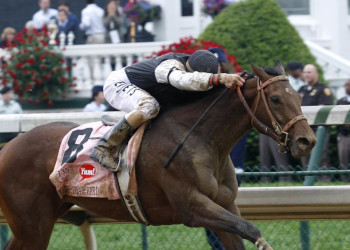
Mine That Bird racing in the Kentucky Derby.
Just four years later in 2009, Mine That Bird won at 50-1 odds, tying with Giacomo for the fourth largest Kentucky Derby upset.
In 2007 when Mine That Bird was purchased by trainer David Cotey, he was worth just $9,500.
Initially, Mine That Bird did not seem to be doing well in the 2009 Kentucky Derby. In fact, he was all the way in the back, with eight lengths between him and the second-to-last horse! But this was all part of the plan.
Mine That Bird’s rider was Calvin Borel, who also managed to win the Kentucky Derby two years prior while riding Street Sense.
Relying on the same techniques he had in 2007, Borel was able to not only catch up with the field but charge past them all to claim the victory. In fact, by the time he crossed the finish line, there were six and three-quarters lengths between them and the second-place horse!
If you had wagered $2 on that race, you would have walked away with $103.20!
Bu the time Mine That Bird won the Kentucky Derby, he had passed to a different trainer: Chip Woolley. At the time, Woolley was not well-known.
Times Union says, “In the week leading up to the race, Woolley was seen every day tending to his horse alone as he hobbled around the barn on the Churchill backstretch. None of the large media contingent assigned to cover the Derby paid him any mind… Woolley transported Mine That Bird from New Mexico to Louisville in a trailer, which he towed behind his pickup truck. The trip took 21 hours.”
Both Mine That Bird and Woolley were propelled into fame by the victory at the Kentucky Derby.
Mine That Bird is another horse that didn’t win again. He did place, however, and he did receive the honor of being named the New Mexico Horse of the Year in 2009.
If you are wondering where Mine That Bird is now, America’s Best Racing reports, “Today, Mine That Bird is working with Allen in a role similar to a pony horse at HV Ranch near Lone Oak, Texas, where the owner is assisting trainer Rosa Ramirez. While Mine That Bird may not be a traditional pony horse, it’s a chance for Allen to stay close with his Derby winner.”
While you’re heading out to do your gambling, do you know how to build your own props bets? We’ve got your back there as well!
1999: Charismatic
The 1999 Horse of the Year was Charismatic, winner of both the Kentucky Derby and the Preakness Stakes that year. The odds of Charismatic winning that year at the Derby were 31-1.
Naturally, there were high hopes that Charismatic might also win the Belmont Stakes that year, and thus the entire Triple Crown. And initially, he was winning. But then, tragedy struck.
America’s Best Racing writes, “At the quarter pole of the Belmont Stakes, Charismatic led by a head and, yes, a storybook finish was in the offing. But in that final quarter-mile, reality set in. Not only did Charismatic tire and finish third but shortly after he crossed the finish line, the reason for his fatigue became tragically evident. Charismatic suffered a career-ending fractured leg in the Belmont and the injury might have been fatal if Antley had not hopped off and cradled the horse’s injured leg until medical help arrived.”
Thankfully, Charismatic survived, and even though he had seen the end of his racing days, he went to stud. He spent some time in Japan, and then eventually came back to Kentucky. He retired at Old Friends Thoroughbred farm and died in 2017.
In his closing comments at America’s Best Racing, Bob Ehalt writes, “Yet in a storybook or Hollywood script [the injury] never would have happened. Instead, Charismatic would have taken the lead at the top of the stretch and dashed off to a spot in the Hall of Fame. But what happened on June 5, 1999, in the Belmont Stakes was a real-life, flesh-and-blood story that flies in the face of sentiment and reminds us that nothing should be taken for granted – even if it is the perfect storybook ending.”
This is something that every punter should keep in mind whether wagering on the Triple Crown or any other horse racing event.
It is easy to get swept away by an amazing story and by what we want to happen. But what takes place in real life can sometimes dash our wildest hopes and dreams.
1995: Thunder Gulch
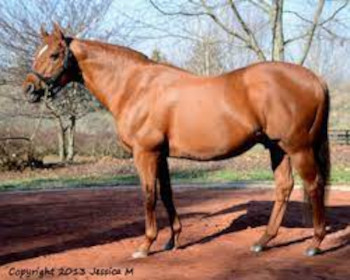
Thunder Gultch.
I don’t know a lot about horses, but that’s one good looking horse there!
The next horse on our list to shock the world at the Kentucky Derby was Thunder Gulch in 1995. The odds were 25-1.
That year, jockey Gary Stevens rode Thunder Gulch to victory at Churchill Downs. Thunder Gulch placed third in the Preakness Stakes, and then beat Star Standard in the Belmont Stakes, winning two of the three legs of the 1995 Triple Crown.
Another victory for which Thunder Gulch became famous was his win in the Travers Stakes. What was especially noteworthy about this is that this meant he had won the Travers Stakes, the Kentucky Derby, and the Belmont Stakes — a feat that only three other horses had accomplished.
Alas, Thunder Gulch’s career ended after the Jockey Club Gold Cup race due to an injured cannon bone.
Thunder Gulch went to stud before retiring, and afterward spent a lot of time with American Pharaoh, who won the 2015 Triple Crown. He reportedly had a calming effect on the other horse. Thunder Gulch passed away in 2018. At the ripe old age of 26, the effects of age on his health led to the decision to give him euthanasia.
2011: Animal Kingdom
While a number of the horses on this list who shocked everyone at the Kentucky Derby struggled afterward to continue winning races, one that did not is Animal Kingdom, the 2011 winner of the Kentucky Derby. The odds were 21-1.
Originally, a horse named Toby’s Corner would have raced in the Kentucky Derby. But Toby’s Corner got a sore leg and could not race in the Kentucky Derby. So, Animal Kingdom, trainer H. Graham Motion’s other option, would need to race instead. Animal Kingdom had never run on dirt before.
John R. Velaquez, the jockey who rode Animal Kingdom to victory that day, also originally had had other plans. He was supposed to ride Uncle Mo, who had been the favorite for the Derby that year. But like Toby’s Corner, Uncle Mo would never make it to the field. When Uncle Mo came down with a stomach bug, Velaquez became available to ride Animal Kingdom.
But why did Velaquez ride Animal Kingdom, and not somebody else? Good point. Well, as it turns out, the original jockey who was supposed to ride Animal Kingdom was Robby Albarado. But Albarado was injured.
So, Velaquez and Animal Kingdom were the most unlikely pair to enter the Kentucky Derby! And it was only through a series of misfortunes affecting two other horses and one other jockey that it came about. Velaquez had never once ridden Animal Kingdom before the Derby that day. He had previously appeared in the Derby 13 times and had yet to have a win under his belt.
Who could have guessed that Velaquez would finally win a Kentucky Derby riding Animal Kingdom? It was an astonishing outcome. And it turned out that the two achieved a number of other feats along the way. For example, they closed their last half mile with incredible speed only exceeded in the history of the Derby by Secretariat.
Imagine if you were betting on the Kentucky Derby that year how hard it would have been to know what to do about Animal Kingdom.
The horse had long odds, but there would have been so little data to go on! Would Animal Kingdom perform poorly on dirt since he’d never run on dirt before or would he take right to it? Would he and Velaquez be a natural fit, or not? There would have been so much guesswork in placing a wager. We suspect that most punters who placed money on Animal Kingdom that year just got lucky.
At the conclusion of that year’s Triple Crown (which included placing second in the Preakness Stakes), Animal Kingdom required leg surgery. He recovered, but then had another fracture. That meant he was not able to run in the Dubai World Cup in 2012. But he would be back to run in the Dubai World Cup the following year. Jockey Joel Rosario rode him to victory in that race in 2013.
2002: War Emblem
War Emblem is another horse that had 21-1 odds of winning the Kentucky Derby. He was not the sort of horse one would expect to win. For one thing, multiple problems with bone chips caused buyers to question his worth. For another thing, he had behavioral problems. Because he liked to bite so much, he was sometimes jokingly called “Hannibal Lecter.” Sometimes, he even misbehaved at the starting gate, which would make it harder for him to win his races.
One would expect a jockey with a well-developed bond with the unruly horse to ride him at least to Kentucky Derby victory, but that was not what happened.
As with Animal Kingdom, War Emblem won the Kentucky Derby with a rider on his back who had never ridden him before – Victor Espinoza. In fact, Espinoza and War Emblem had never even met before that morning.
War Emblem also went on to win the Preakness Stakes in 2002. But he was unable to win the entire Triple Crown. In fact, he did quite badly in the Belmont Stakes, coming in 8th.
Describing War Emblem’s personality, trainer Bob Baffert once said, “He’s been so awesome in his works. You forget how good this horse is. From now on we’re just going to let him run the way he wants. If he were one of those wild horses in the herd, he’d be the top dog. Like ‘The Black Stallion,’ you don’t want to break that spirit.”
You might also be interested in comparing the jump in the horse’s value. Britannica says, “His Kentucky-bred owner paid only $20,000 for him because the horse had bone chips in his front ankles. On April 6, 2002, the colt easily won the Illinois Derby by six and a quarter lengths. Saudi Arabian Prince Ahmed bin Salman—a media mogul who also bred, bought, and raced Thoroughbred horses—saw the race on television and was so impressed with the colt’s performance that he called his agents in the United States and told them to explore the possibility of purchasing the colt. For his subsequent purchase of a 90 percent interest in the horse, the prince paid a hefty $900,000.”
Following his poor performance in the Belmont Stakes, War Emblem went to stud. Here, too, his stubborn, independent personality asserted itself. There were years when he did not sire any horses at all because he simply did not like any of the mares.
After he retired to Old Friends Equine Retirement, he had to be gelded owing to his refusal to engage in test-breeding for contagious equine metritis. He lived until age 21, after which a rupture in his small intestine killed him.
1992: Lil E. Tee
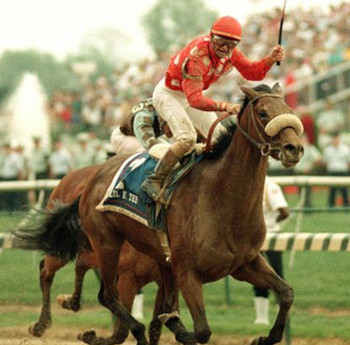
Lil E. Tee running around, doing some of that winning action!
Finally, one more surprising upset in the Kentucky Derby occurred in 1992, when Lil E. Tee won with 17-1 odds.
The “Lil” in Lil E. Tee’s name is a reference to breeder Lawrence I. Littman’s initials, and were a naming convention for all his horses. Often, people referred to the horse simply as ‘E.T.'”
E.T. got off to a rough start in life. For one thing, no one was impressed by his parents. For another, he had an immune deficiency. This led to colic, which subsequently almost killed him at a young age. After an operation, he recovered which was itself a shock, since a lot of horses never race again after requiring that type of surgery.
No one thought this horse was ever going to do anything. As a result, he was passed from one owner to the next over the first couple of years of his life. At one point, his value was as low as $3,000!
As explained here, “Lil E. Tee overcame his bleak beginnings to reach the respected hands of trainer Lynn Whiting, jockey Pat Day, and owner Cal Partee. After winning the Jim Beam stakes and finishing second in the Arkansas Derby, Lil E. Tee arrived at Churchill Downs to face a field of seventeen horses, including the highly acclaimed favorite, Arazi, a horse many people forecast to become the next Secretariat. A 17-to-1 longshot, Lil E. Tee won the Derby with a classic rally down the home stretch, and finally, Pat Day had jockeyed a horse to Derby victory.”
It cannot be emphasized enough how convinced people were that Arazi would win the Kentucky Derby. TIME magazine even declared the horse as the “second coming” of Secretariat.
What became of E.T. after he blew everyone’s minds by winning the Kentucky Derby in 1992? He ran in the Preakness Stakes and came in fifth, and then had a lung infection, preventing him from entering the Belmont Stakes. After that, he had to have bone chip surgery. But the following year, he raced again and took first place in the Grade II Razorback Handicap.
Over his racing career, the horse that was once valued at a measly $3,000 brought in $1,437,506 in earnings. After retiring and racing, he went to stud. Sadly, he had to be euthanized in 2009 owing to sickness after surgery.
How Can You Maximize Your Chances of Winning at Long Odds in Horse Racing?
The public tends to bet on favorites in horse racing (and in other sports). This makes sense; people wager on the horse they expect to win, and the odds give us an indication of which horses those might be.
When we see really long odds, that means that we are looking at a serious dark horse. Naturally, always putting your money on the horses with the longest odds is not a viable strategy. So, how can you catch shocking upsets when they happen and walk away with a full purse?
Well, there is a lot of chance in horse racing, but here are some things you can do:
- Closely follow not just the recent performance of horses in a field, but also the details you can find on their trainers and jockeys.
While there is plenty of debate about whether the horse or the jockey matters more in racing in general, there is evidence from these anecdotes that the approach a jockey and trainer take can make a huge difference with a horse (consider, for example, the story about Calvin Borel and Mine That Bird). If you have reason to believe a trainer and jockey have a solid approach in place, maybe a horse with long odds is undervalued.
- Pay close attention to the track conditions.
Some horses do better than others with certain track conditions (or the “going,” as our friends across the pond like to call it). A horse that runs at its best on a fast track may have a hard time on a sloppy track. Likewise, some horses excel at racing in muddy or sloppy conditions. If you know a horse with long odds will be racing in track conditions that are ideal for that horse, maybe it is worth backing with your money.
- Consider the rest of the field.
Pay attention to how conditions at the track may impact the other horses. For example, let’s say the conditions are muddy. If your horse with the long odds do okay in muddy conditions but you also know a lot of the competing horses do not, that gives your dark horse more of an edge. Likewise, you should look up information about the tactics used by the jockeys and the running styles of the horses. Does your dark horse happen to have a style that might be particularly effective against this field, even if the individual competing horses are considered superior overall?
Think about hedging. If you do place a wager on a horse with long odds, you could also always place another one on a horse with short odds. You will not win much if the horse with short odds wins, but at least it might be something to offset the loss of the more unlikely wager (of course, you could always lose both bets – don’t forget that). On the flip side, if you do win the long odds bet and lose the short odds bet, the payout will be more than enough to offset the loss you did take.
Regardless, you should keep in mind that if you do win a long-odds bet on horse racing, there will probably be at least some luck involved.
Bet on Horse Racing Now
We hope you enjoyed these stories about the most shocking upsets in the history of the Kentucky Derby.
While upsets like these don’t happen every day, for the lucky punter who happens to bet on a dark horse when they do, outcomes like these can be surprisingly lucrative.
And no matter what happens—whether you wager on a dark horse or not, whether you win or lose—just putting down a wager on a hose race can add to the excitement.
Ready to start betting on the Kentucky Derby and other horse races? Check out our complete guide to betting on horse racing.
You can also take a look at our side-by-side comparison of the racebooks at our top recommended online sportsbooks. In that post, we help you find the best promotions, the best bet selections, and more! Have fun, and good luck—maybe one day you will be the winner of a horse racing bet with incredible long odds.
And Maybe You’ve Also Got an Interest in These As Well:
